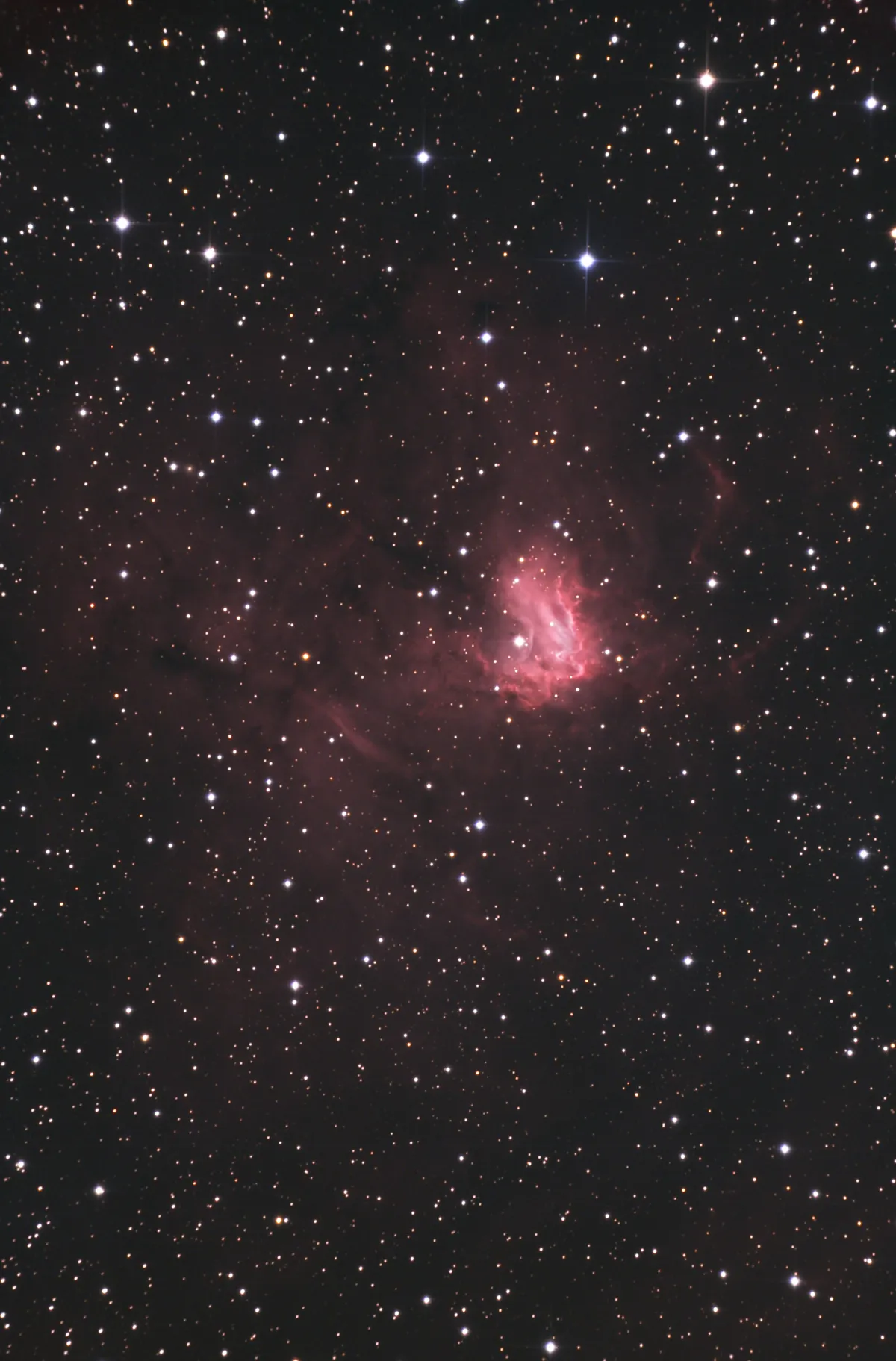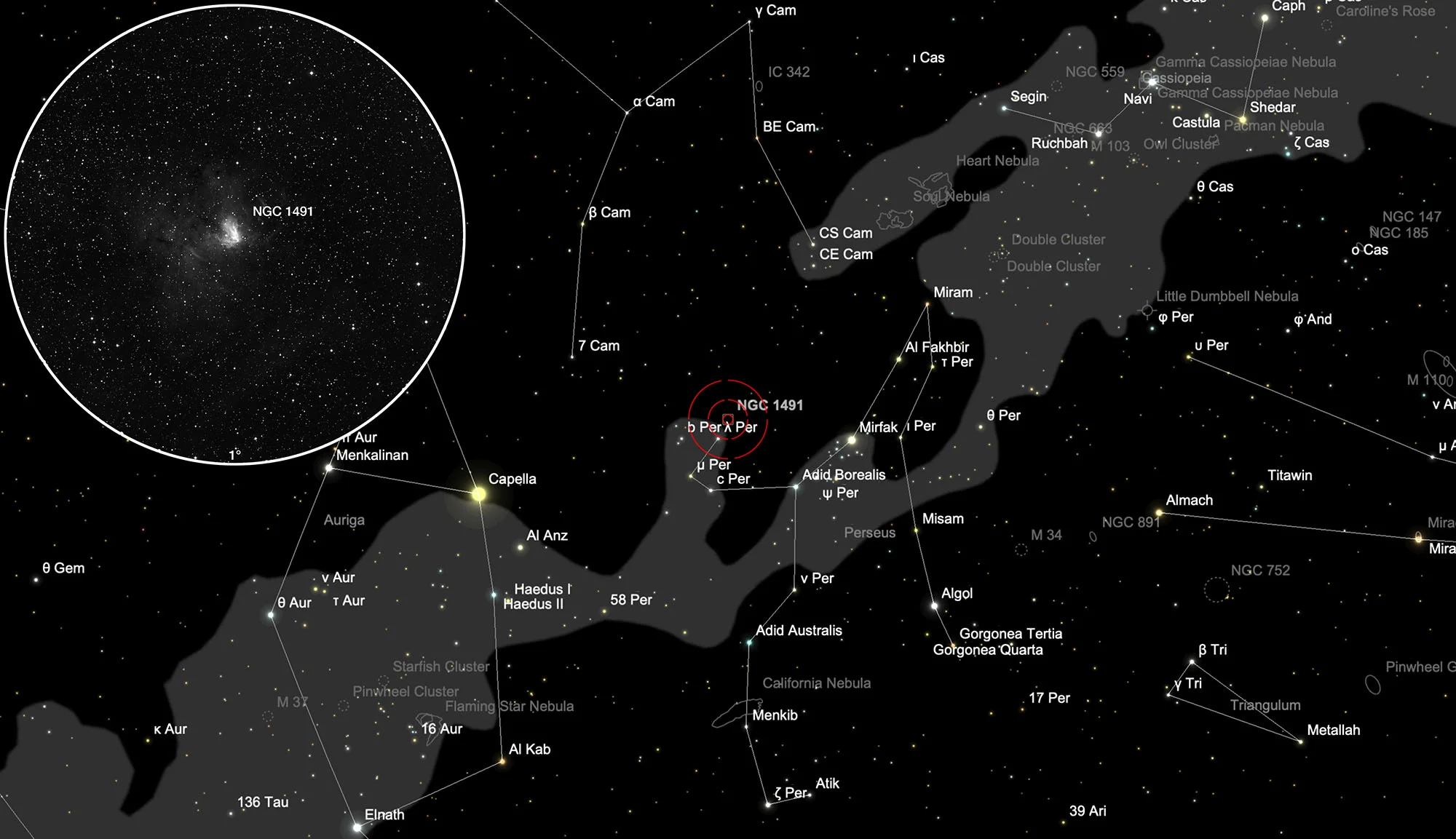Little Pacman (NGC 1491)

History
This emission nebula that was discovered by William Herschel on 28 December 1790 and cataloged as I 258. He noted about it: «Very bright, irregular figure, round, brighter in the middle, 5' long 4' broad. A pretty large star in it towards the following side, but unconnected.» [465] Dreyer cataloged the nebula as NGC 1491 in his «New General Catalogue». [313] Other designation for this H-II region are: LBN 704, Sharpless 2-206, S 206, Sh2-206. [145]
Physical Properties
There are two measured distances on Simbad: 3.0 kpc and 3.3 kpc (9780 and 10'800 light years). The distance to the centre of the Milky Way is about 11.1 kpc (36'200 light years). An electron temperature of 8350 K ± 1600 K was measured in the nebula using a radio telescope. [145, 196, 318]
| Designation | NGC 1491 |
| Type | EN |
| Right Ascension (J2000.0) | 04h 03m 13.5s |
| Declination (J2000.0) | +51° 18' 58" |
| Diameter | 25 × 25 arcmin |
| Metric Distance | 3.000 kpc |
| Dreyer Description | vB, S, iF, bM, r, * inv |
| Identification, Remarks | WH I 258; GC 793; LBN 704; in Sh2-206 |
Finder Chart
NGC 1491 is located in the constellation Perseus about one degree north-north-west of the star λ Persei. The constellation is best observed between September and February.
Visual Observation
400 mm aperture: With a 21 mm Ethos eyepiece (85x) and without a filter, the nebula stands out more and more clearly from the background with increasing height above the horizon and increasingly darker sky and is easily recognizable with an irregular shape next to a slightly brighter star. With a 16 mm Nagler eyepiece (112x), O-III filter and indirect vision, it is easily recognizable and appears oval shaped with a star. An H-beta does not bring any improvement. With a 9 mm Nagler (200x) and O-III filter, the image is too dark. Without a filter, the nebula is easier to see and, together with the asterisks in the area, forms the nicer sight. A worthwhile object. — Taurus T400 f/4.5 Dobsonian, Hasliberg Reuti, 6. 11. 2021, Bernd Nies
762 mm aperture: With the 13 mm Ethos eyepiece (193x) and O-III filter, the nebula is visible with significantly more structure and direct vision. The star appears just outside the nebula. It looks something like the Pacman Nebula NGC 281. — 30" f/3.3 Slipstream Dobsonian, Hasliberg Reuti, 6. 11. 2021, Bernd Nies
